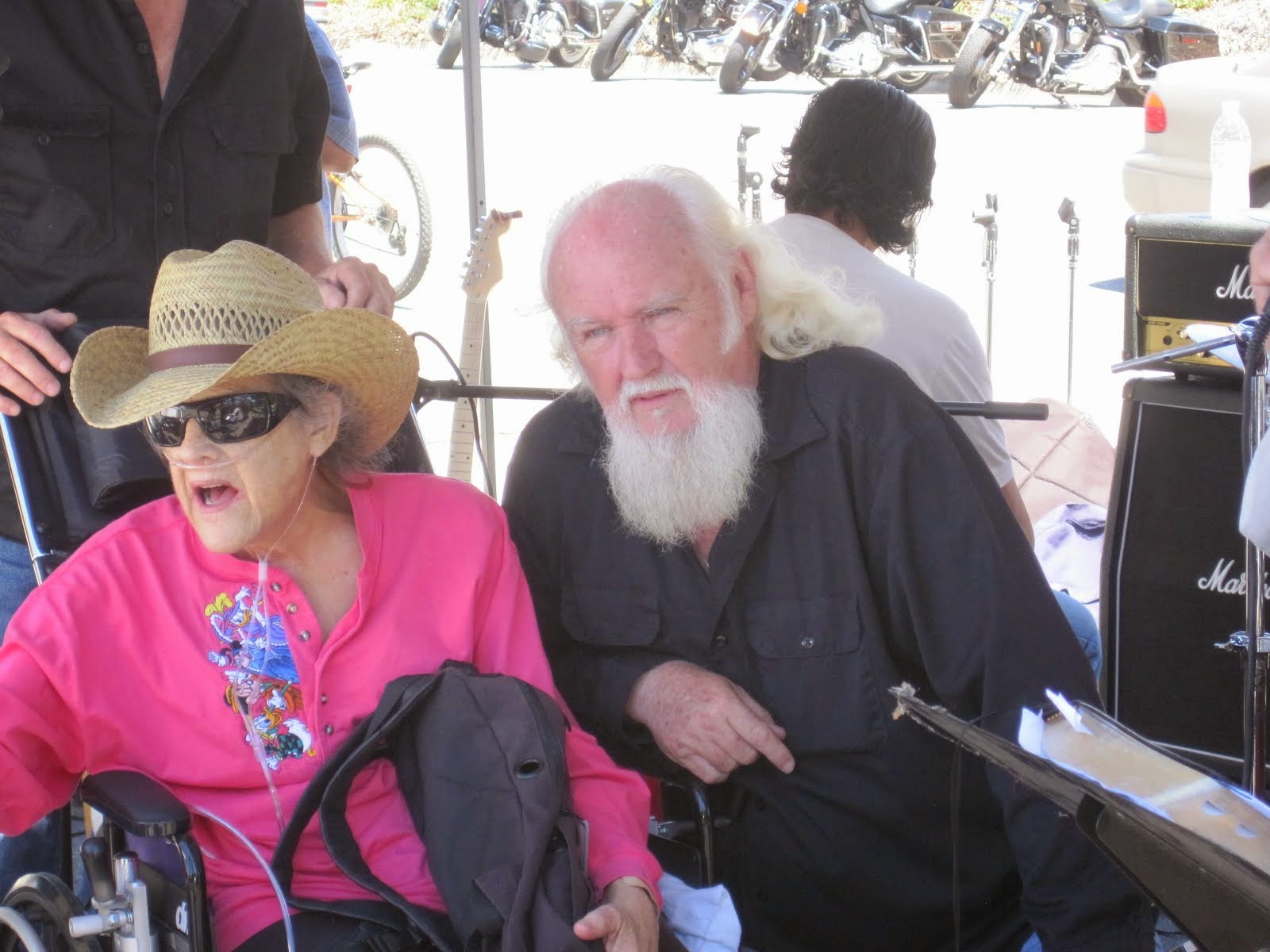OFF THE WIRE
http://www.lawcollective.org/
Reference Material on Discrimination in the Legal System
Walker, Samuel, Miriam Delone, and Cassia C. Spohn. The Color of Justice: Race, Ethnicity, and Crime in America, 3d ed. Belmont, CA: Wadsworth, 2003.
Extremely well organized. Provides the definitions and statistics you need to have a useful discussion of inequities in the legal system. Covers police, court, prison, and the death penalty. Includes convenient overviews of studies and theories on discrimination in criminal justice. (315 pages)
Mauer, Marc. Race to Incarcerate: The Sentencing Project. New York: New Press, 1999.
Investigates race and class in the context of prison. Examines the “Tough on Crime” Movement and the War on Drugs. Also brief but useful discussion of news coverage concerning crime and incarceration. (194 pages)
The Sentencing Project: http://www.sentencingproject.org/.
Various reports analyzing disparate treatment in sentencing on the basis of race, class, and gender. Also short “fact sheets,” useful for overviews or quick research.
Building Blocks for Youth: http://www.buildingblocksforyouth.org/.
Contains and cites many studies on minority youth in the justice system. Some studies concern the treatment of young women, and the report ¿Dónde está la Justicia? relates to Latino youth.
Harris, David. Profiles in Injustice: Why Racial Profiling Cannot Work. New York: New Press, 2002.
Everything you need to know about racial profiling: history, important court cases, and statistical studies. Moving descriptions of the impact of racial profiling on individuals, along with explanations of its unconstitutionality, and its ineffectiveness as a law enforcement technique. (227 pages)
Berry, Mary F. The Pig Farmer’s Daughter and Other Tales of American Justice: Episodes of Racism and Sexism in the Courts from 1865 to the Present. New York: Knopf, 1999.
Stories showing the effects of sexism and racism in court cases, both during trial and on appeal. Includes cases involving extramarital sex, gay and lesbian relationships, prostitution, seduction, child support, abortion, rape, and incest. (243 pages)
Miller, Jerome G. Search and Destroy: African-American Males in the Criminal Justice System. New York: Cambridge University Press, 1996.
Fairly intellectual analysis of racism in the legal system, but full of graphic accounts of official mistreatment and the horrifying complacency of those who condone it. (242 pages)
Reiman, Jeffrey. The Rich Get Richer and the Poor Get Prison: Ideology, Class and Criminal Justice. New York: Macmillan, 1990.
Very lively presentation on the nature of crime, and how class and race influence who is punished. Reminiscent of Michael Moore (director of Bowling for Columbine, Fahrenheit 9/11, etc.), but with an explicitly Marxist slant. (178 pages)
Leonard, Kimberly K., C. Pope, and W. Feversherm, eds. Minorities in Juvenile Justice. Thousand Oaks, CA: Sage, 1995.
To understand every word of these articles, you’d need to have taken a class in statistics (and still remember some of it), but most of the tables and discussions are pretty clear. Chapters 2 and 7 summarize interviews with police, prosecutors, public defenders and judges, exposing their attitudes concerning race and class. (216 pages)
Lynch, Michael and E. Britt Patterson, eds. Justice With Prejudice: Race and Criminal Justice in America. Albany, NY: Harrow and Heston, 1996.
A collection of rather academic articles, but Chapter 5 provides important statistics and analysis on racism in media coverage of crime. (169 pages)
Up to date statistics on law enforcement, conviction, and sentencing can be obtained online. Good websites include:
Bureau of Justice Statistics (BJS)
http://www.ojp.usdoj.gov/bjs/
National Criminal Justice Reference Service (NCJRS)
http://www.ncjrs.org/
Sourcebook of criminal justice statistics Online (SCJS)
http://www.albany.edu/sourcebook/
However, the data is often presented in such a way that it’s hard to spot the instances of systemic discrimination. You may have to draw on several different tables and do a little math to get useful information. Before you start number-crunching, read some of the books listed above to see how they analyzed the statistical material, because you may want to follow their approach. The agencies that publish these statistics have staff who can help you find the right data, especially if you explain really clearly what you’re after. Check the websites to get up-to-date contact information (including 800 numbers)—look under “Contact” for BJS and NCJRS, and under “About Sourcebook” for SCJS.
There’s a great deal of reference material on discrimination in the legal system. The sources listed above are easy to find in large public libraries, up-to-date, and for the most part reasonable to read (not written for the edification of other academicians). They’re listed in order of how useful and readable they seemed. The number of pages listed for each book is generally just the text, not the notes, indices, bibliographies, etc.
skip to main |
skip to sidebar




Bill & Annie

Art Hall & Rusty


NUFF SAID.......


































































OOHRAH

ONCE A MARINE,ALWAYS A MARINE

GIVING BACK


MOUNT SOLEDAD














BIKINI BIKE WASH AT SWEETWATER










FRIENDS





BILL,WILLIE G, PHILIP










GOOD FRIENDS


hanging out

brothers


GOOD FRIENDS

Good Friends

Hanging Out




Bill & Annie
Art Hall & Rusty
Art Hall & Rusty


NUFF SAID.......



















NUFF SAID......



























Mount Soledad




BALBOA NAVAL HOSPITAL
RUSTY DANNY

ANNIE KO PHILIP

PHILIP & ANNIE

OUT & ABOUT

OOHRAH...

OOHRAH
ONCE A MARINE,ALWAYS A MARINE

ONCE A MARINE,ALWAYS A MARINE
American Soldier Network GIVING BACK

GIVING BACK
CATHY & BILL
PHILIP & DANNY & BILL

MOUNT SOLEDAD
bills today
EMILIO & PHILIP
WATER & POWER
WATER & POWER
bootride2013



BIKINI BIKE WASH AT SWEETWATER







ILLUSION OPEN HOUSE

FRIENDS


GOOD FRIENDS



BILL,WILLIE G, PHILIP









GOOD FRIENDS

GOOD FRIENDS
Friends
- http://www.ehlinelaw.com/losangeles-motorcycleaccidentattorneys/
- Scotty westcoast-tbars.com
- Ashby C. Sorensen
- americansoldiernetwork.org
- blogtalkradio.com/hermis-live
- davidlabrava.com
- emiliorivera.com/
- http://kandymankustompaint.com
- http://pipelinept.com/
- http://womenmotorcyclist.com
- http://www.ehlinelaw.com
- https://ammo.com/
- SAN DIEGO CUSTOMS
- www.biggshd.com
- www.bighousecrew.net
- www.bikersinformationguide.com
- www.boltofca.org
- www.boltusa.org
- www.espinozasleather.com
- www.illusionmotorcycles.com
- www.kennedyscollateral.com
- www.kennedyscustomcycles.com
- www.listerinsurance.com
- www.sweetwaterharley.com

Hanging out

hanging out
Good Friends

brothers
GOOD FRIENDS

EMILIO & SCREWDRIVER

GOOD FRIENDS
Danny Trejo & Screwdriver

Good Friends
Navigation
Welcome to Bikers of America, Know Your Rights!
“THE BIKERS OF AMERICA, THE PHIL and BILL SHOW”,
A HARDCORE BIKER RIGHTS SHOW THAT HITS LIKE A BORED AND STROKED BIG TWIN!
ON LIVE TUESDAY'S & THURDAY'S AT 6 PM P.S.T.
9 PM E.S.T.
CATCH LIVE AND ARCHIVED SHOWS
FREE OF CHARGE AT...
BlogTalkRadio.com/BikersOfAmerica.
Two ways to listen on Tuesday & Thursday
1. Call in number - (347) 826-7753 ...
Listen live right from your phone!
2. Stream us live on your computer: http://www.blogtalkradio.com/bikersofamerica.
A HARDCORE BIKER RIGHTS SHOW THAT HITS LIKE A BORED AND STROKED BIG TWIN!
ON LIVE TUESDAY'S & THURDAY'S AT 6 PM P.S.T.
9 PM E.S.T.
CATCH LIVE AND ARCHIVED SHOWS
FREE OF CHARGE AT...
BlogTalkRadio.com/BikersOfAmerica.
Two ways to listen on Tuesday & Thursday
1. Call in number - (347) 826-7753 ...
Listen live right from your phone!
2. Stream us live on your computer: http://www.blogtalkradio.com/bikersofamerica.
Good Times
Hanging Out

Key Words
- about (3)
- contact (1)
- TENNESSEE AND THUNDER ON THE MOUNTAIN (1)
- thinking (1)
- upcoming shows (2)
Blog Archive
-
▼
2011
(5448)
-
▼
February
(470)
- solobiketour4cancer.com
- POCKET ATTY. - A Lawyer in your Pocket..
- Texas - Authorities strike at Bandidos, close meth...
- Drug raiders target Bandidos
- Texas - SAN ANTONIO - Raid: S.A. Bandidos 'a bunch...
- MYRTLE BEACH, SC -- Biker Bluesgrass Fest kicks of...
- Noise ordinance back to square one, New Hampshire ...
- It's a bird! It's a spy! It's both, Backed by the ...
- Anti Helmet Choice Testimony in Nebraska
- Hells Angels to plead not guilty
- New York Freedom Riders New York Legislation and n...
- some pro helmet case questions ...(rebuttal to Har...
- New Kansas City, Mo - Motorcycle Accident Legisla...
- LUCKY`S RIDE FOR LUEKEMIA
- 'Dead Red Bill' Allows Motorcycles To Run Red Ligh...
- Australia - sydney - (Third Rock from the Sun) Hel...
- FLORIDA: Motorcycle only checkpoints stir controversy
- Soldier impersonators target women on Facebook, T...
- Maine, WATERVILLE -- Canaan biker vindicated, wins...
- MI: Readers gear up To push repeal of helmet law
- Australia - The great bikie defection
- WEARE, NEW HAMPSHIRE POLICE CHARGE CITIZEN WHO REC...
- INDIANA - A Life Lived: Running bars and helping n...
- For some reason, this does not give me the warm fu...
- Atlanta, Ga - Court filing: Depression, accident l...
- Definition of probable cause
- some pro helmet case questions ...
- HELMET LAW FACTS
- Newark, NJ - East Orange man alleges Newark police...
- Australia - Bikie Wars: Police seize explosives fr...
- CHECK THE "EVENTS" PAGE ON OUR WEBSITE AT abateloc...
- The Walmart Of Weed? Medical Marijuana Emporium He...
- PLEASE NOTE NEW DATE!!! I know it's early, but kin...
- Canada - Two Hells Angels jailed
- CANADA - Bikers turned informants sentenced to lif...
- here is the pro helmet case...
- New Jersey - Hightstown officials dispute State Po...
- We should send this to legislators here.... Kansas...
- $7,000,000 (that's seven million !) Settlement Aga...
- Police push for gang patch ban in Whangarei
- State of Georgia may utilize federal grant for mot...
- Another reason we don't like politicians... at times!
- LIQUID DYNAMITE
- LDA v Paralegal
- The FBI Gets Their Terrorist,,,
- CHARLOTTE, NC - SWAT Officer Dies After Suffering ...
- California - SAN DIEGO - Man pleads guilty to mans...
- Daytona-bound bikers protest State Patrol checkpoints
- Letter to the Gov of Georgia
- Kansas House Approves Bill Allowing Motorcycles to...
- Ticket Camera Photos Not Holding Up In California ...
- WA introduces HB1984 to FULLY REPEAL HELMET LAW
- Daytona-bound bikers protest State Patrol checkpoints
- ABATE of Wisconsin's 2011 Lobby Day
- Georgia - BIKES: Riders Asked To Oppose Georgia Mo...
- if you're from California, the Legislature needs t...
- ILLINOIS: WE OPPOSE THESE BILLS
- Ontario, Canada - SIU letters detail frustration w...
- Kansas - House Approves Bill Allowing Motorcycles...
- Ontario, Canada - Number of police complaints incr...
- Canada - Pair turn informants, guilty in homicide ...
- Cambridge — Mass - Fight breaks out at Harvard Squ...
- Australia - Fifth man charged over parlour assault
- STOPPING DISTANCE
- MASSACHUSETTS: Wilmington Shriner's Bike Show
- CHARLESTON, W.Va. - Ex-motorcycle club leader gets...
- Australia - Bikie nabbed
- The Teachings that the Egyptians Got to Revolt - m...
- Australia - Unlawful bikers in cop blitz
- New Zealand - Be brave, ban patches, say police
- Ohio - Sandusky- Martin says biker club killed Gibson
- EDITORIAL: Oregon - Don’t weaken helmet law A bill...
- Florida Toll Road Sued for Holding Motorists Hostage
- Florida - Scott Russell To Race Harley-Davidson XR...
- Wisconsin - Man gets probation in Franklin tavern...
- Australia - Moving tribute to founding Gypsy Joker...
- Scott County, Iowa - Jury finds James Salkil guilt...
- New Zealand - Ban gang patches in our town
- You think English is easy???
- Need Assistance
- Nevada - Brothels fear Reid will seek their demise..
- Australia - High-ranking OMCG member charged over ...
- Sen Harry Reid addresses Nevada State Legislature..
- Our Bill to stop MOTORCYCLES' ONLY ROADSTOPS AB 10...
- AMA ALERT: Congressional Motorcycle Caucus gains n...
- Australia - Three Notorious bikie gang members ch...
- Massachusettes State Tropper Discharged after harr...
- PA: City officer faces trial in motorcycle crash d...
- Arizona - EXCLUSIVE: CBS 5 Invited To Attend Hells...
- The 2nd annual Biker benefit for Feeding America -...
- Canada - Agency gets green light to use wiretaps ...
- NC: Choice battles emerge in Legislature
- Australia - Bikies challenge protest fines....
- Edmonton Canada: Noise law fails first test in cou...
- BOLT and the California Compromise BIll.
- Bikerlowdown B.A.D. biker rights panel
- Tampa, FL -- Plant City man faces charges in deadl...
- PINK BIKER CHIC EMPOWERS WOMEN and VETERANS
- Australia - Bikie jailed over axe attack
- Australia - Sydney bikie loses parking fine fight.
-
▼
February
(470)
Bikers of America, Know Your Rights!... Brought to you by Phil and Bill
Philip, a.k.a Screwdriver, is a proud member of Bikers of Lesser Tolerance, and the Left Coast Rep
of B.A.D (Bikers Against Discrimination) along with Bill is a biker rights activist and also a B.A.D Rep, as well, owner of Kennedy's Custom Cycles
